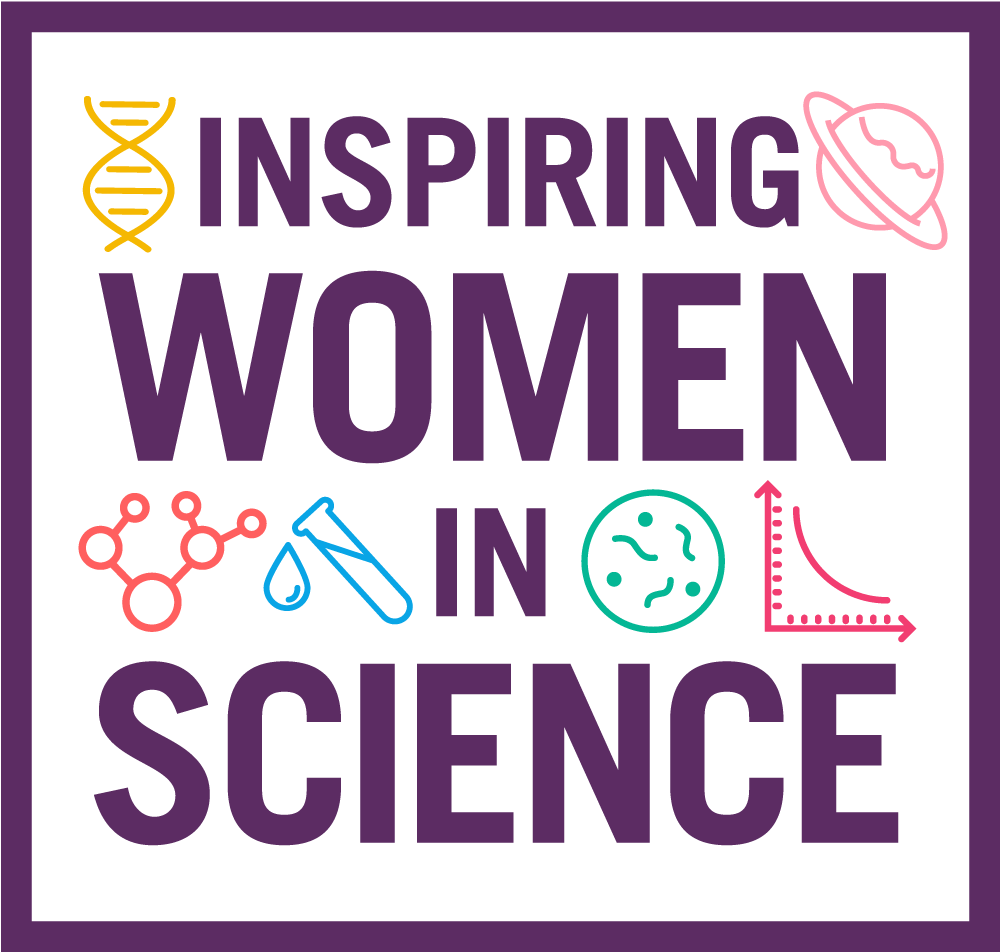
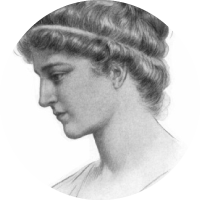
Hypatia
Astronomer-Mathematician- Philosopher
(~350-370 CE-415)
Egypt (of Greek origin)
She became one of Alexandria's first female teachers of neoplatonic philosophy. She was killed by a mob of extremist Christians. Although her death was a tragedy, her life became a symbol for education in the face of ignorance. .
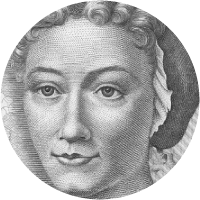
Maria Sibylla Merian
Scientific Illustrator- Entomologist
(1647-1717)
Germany
She was one of the first and most important entomologists. Her work helped future scientists understand insects and her beautiful, detailed illustrations amaze and educate people to this day.
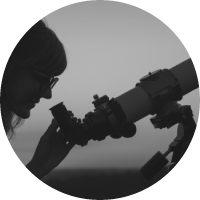
Wang Zhenyi
Astronomer-Poet- Mathematician
(1768-1797)
China
She accurately recorded and explained lunar eclipses and equinoxes. She was considered one of the greatest minds of the Qing dynasty.
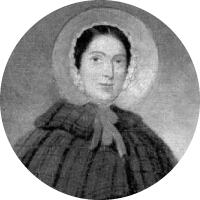
Mary Anning
Fossil Collector- Paleontologist
(1799-1847)
England
At the age of 12, she found the first skeletons of the Ichthyosaur and the Plesiosaur and her work was key in proving that extinction occurs.
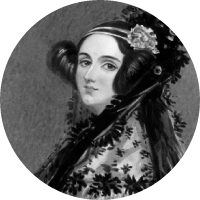
Ada Lovelace
Mathematician-Writer
(1815-1852)
England
She was the first person to create "a computer program" working alongside Charles Babbage who invented the Difference Engine, a gigantic, gear-filled calculator, considered a predecessor to modern-day computers. She is honored as a computer pioneer with the Ada Lovelace Day, every 2nd Tuesday in October.
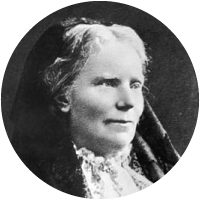
Elizabeth Blackwell
Doctor
(1821-1910)
USA
She was the first woman in America to receive a medical degree. She worked with the poor to fight social injustice with medicine, and founded the New York Infirmary for Women and Children and the London School of Medicine for Women.
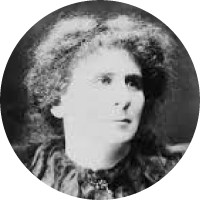
Hertha Ayrton
Engineer-Mathematician-Inventor
(1854-1923)
England
She was the first woman accepted into the Institution of Electrical Engineers and the first woman to win a Hughes Medal from the Royal Society in the UK. She invented a better electric arc and furthered our understanding of electric current.
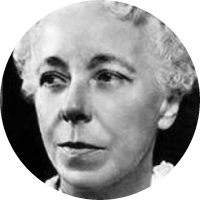
Karen Horney
Psychoanalyst
(1885-1952)
Germany
She developed the foundations of feminist psychology and helped create a new field of psychology called neo-Freudianism. She created a new theory of neurosis to help people cope with anxiety. She also founded the American Institute of Psychoanalysis (of which she was a Dean) and the American Journal of Psychoanalysis.
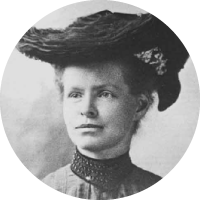
Nettie Stevens
Geneticist
(1861-1912)
USA
She was of the first women in America to be recognized for her biology research. Her groundbreaking research, published in 1905, overturned hundreds of years of misconceptions. She discovered that sex is determined by "x" and "y" chromosomes and changed how we study embryos and cytogenetics.
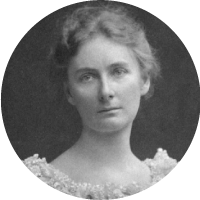
Florence Bascom
Geologist-Educator
(1862-1945)
USA
She was the first woman to be admitted to the Geologic Society of America and to work for the US Geographical Survey. She trained almost every female geologist of her time. She helped inform the modern understanding of how mountains form.
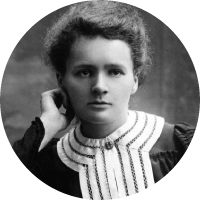
Marie Curie
Physicist-Chemist
(1867-1934)
Poland
She was the first woman to get a doctorate in France. She discovered two elements: polonium and radium. She won two Nobel Prizes, and is still the only person to win in two different disciplines, chemistry and physics. She pioneered research on radioactivity and founded the Curie Institute in Paris.
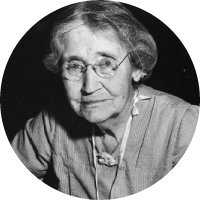
Mary Agnes Chase
Botanist-Suffragist
(1869-1963)
USA
She was the world's greatest agrostologist (expert in grass), identifying thousands of types of grass all over the world. She was an honorary fellow at the Smithsonian Institution and fellow at the Linnean Society of London. She was a suffragist who fought for women's right to vote.
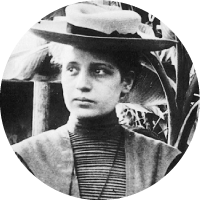
Lise Meitner
Physicist
(1878-1968)
Austria
Along with her lab partner, Otto Hahn, she discovered the element protactinium. She discovered and explained the workings of nuclear fission. Albert Einstein characterized her the German Marie Curie, and there is an element, meitnerium, named in her honor.
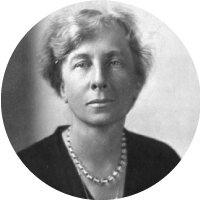
Lillian Gilbreth
Psychologist-Industrial Engineer
(1878-1972)
USA
She was the first woman in the American Society of Mechanical Engineers. She reinvented the modern kitchen space and pioneered in ergonomics, time, and motion studies, as well as organizational psychology. She invented the foot pedal on the garbage can and shelves in the fridge. She used her knowledge of ergonomics to help handicapped people find work. She was nicknamed "the first lady of management."
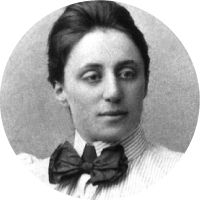
Emmy Noether
Mathematician-Theoretical Physicist
(1882-1935)
Germany
She is considered one of the most important people in the field of mathematics. She created the field of abstract algebra. Her namesake theory, the Noether Theory, connects mathematical symmetry to the conservation of energy.
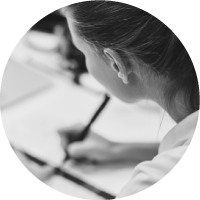
Edith Clarke
Electrical Engineer
(1883-1959)
USA
She was the first female professor in her field in the US, and the first woman to be allowed to share her paper with the American Institute of Electrical Engineers. She created some of the first "software" for electrical engineering and invented a graphical calculator to help solve equations involving hyperbolic functions. She was inducted into the National Inventors Hall of Fame.
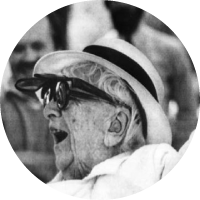
Marjory Stoneman Douglas
Writer-Conservationist
(1890-1998 (108!))
USA
A conservationist, suffragist, and advocate for civil rights, she gave us new insights into the ecosystems of wetlands. Her work helped to establish Everglades National Park. She was awarded the Presidential Medal of Freedom in 1993.
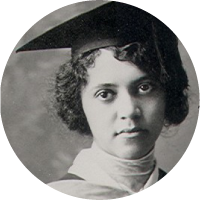
Alice Ball
Chemist
(1892-1916)
USA
She was the first African American and first woman to graduate from the University of Hawaii. She invented the Ball method, and helped cure leprosy with her chemical treatment. February 29th, every four years, is Alice Ball Day in Hawaii.
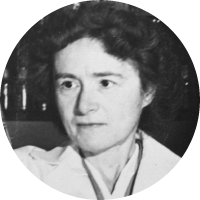
Gerty Cori
Biochemist
(1896-1957)
Czech Republic (Czechoslovakia)
She was the first American woman to win a Nobel Prize (with her husband Carl) in Physiology. Her work has given us an understanding of carbohydrate metabolism and helped us understand diabetes. The Coris' laboratory was the training ground for six other Nobel Prize winners!
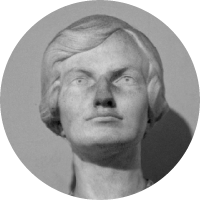
Joan Beauchamp Procter
Zoologist
(1897-1931)
USA
She was an expert in herpetology (the study of reptiles) and discovered a new species, the peninsula dragon lizard. She designed the most complicated and advanced reptile house of its time, and showed how art, painted scenery, and a perfect temperature system could make all animals more comfortable. Her philosophy informs the way modern zoos are run today.
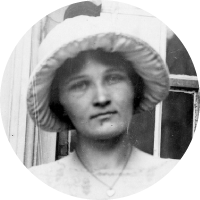
Cecilia Payne-Gaposchkin
Astronomer- Astrophysicist
(1900-1979)
England
She furthered our understanding of stellar evolution. She discovered that the sun is made of hydrogen and helium gas and was the first person to properly "read" a star's temperature. Although Harvard did not give PhDs to women, she did get one from Radcliffe College and eventually became Harvard's Astronomy Department Chair. She was awarded the Henry Morris Russell Prize by the American Astronomical Society.
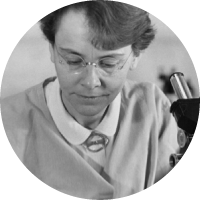
Barbara McClintock
Cytogeneticist
(1902-1992)
USA
She changed the way we understand evolution and botany and was a pioneer in corn genetics, being the first person to make a complete genetic map of corn. Her techniques were so advanced that they were confusing for most scientists of her time. Eventually the scientific community caught up with her and she was awarded the Nobel Prize in 1983. She was the first woman president of the Genetics Society of America.
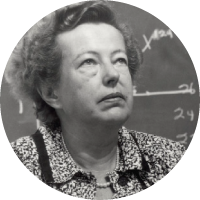
Maria Goeppert-Mayer
Theoretical Physicist
(1906-1972)
Germany
Her work gave us a better understanding of isotopes and proved the nuclear shell model for atoms. Her contributions were eventually recognized and she was awarded the Nobel Prize in physics in 1963.
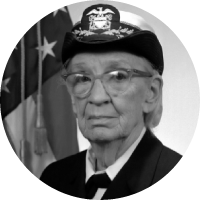
Grace Hopper
Navy Admiral-Computer Scientist
(1906-1992)
USA
She invented the first compiler, forever changing how we use computers. She also created Cobol, the first complex, international computer language. She pioneered the standards for testing computer systems. She received the Defense Distinguished Service Medal.
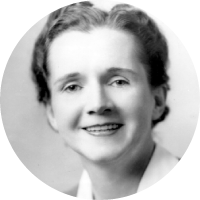
Rachel Carson
Marine Biologist-Conservationist- Author
(1907-1964)
USA
She taught the world about the ocean's ecosystems and inspired the US Environmental Protection Agency. Her book, Silent Spring , triggered the National Environmental Policy Act (NEPA).
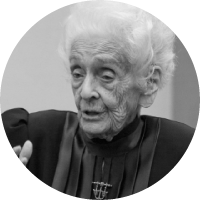
Rita Levi-Montalcini
Neurologist-Italian Senator
(1909-2012)
Italy
An Italian senator for life, she was awarded the Nobel Prize in Physiology or Medicine along with her lab partner and collaborator Stanley Cohen for her work in discovering the Nerve Growth Factor (NGF), a protein that regulates nerve growth and keeps neurons healthy. She was appointed to the Pontifical Academy of Sciences by Pope Paul VI and worked until she died at the age of 103.
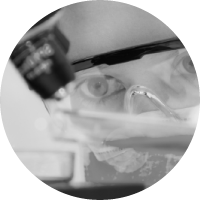
Dorothy Hodgkin
Biochemist-X-Ray Crystallographer
(1910-1994)
Egypt
Nicknamed "the cleverest woman in England," and a "gentle genius," she invented techniques to use x-ray crystallography to map complex molecules and discovered the structure of penicillin, vitamin B12, and insulin. She won a Nobel Prize in Chemistry, the Lenin Peace Prize, and the Order of Merit among many other awards.
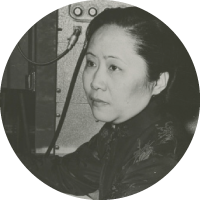
Chien-Shiung Wu
Experimental Physicist
(1912-1997)
China
She helped develop the fuel for the atomic bomb and radiation detectors. She disproved the "law of conservation parity" and changed the practice of physics forever. She won the National Medal of Science in 1975. Her name translates as "courageous hero."
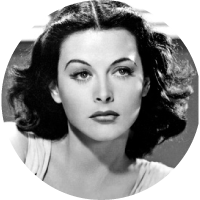
Hedy Lamarr
Inventor-Film Actress
(1914-2000)
Austria
She was widely known as "the most beautiful woman in the world" and was an actress during Hollywood's Golden Age. She co-invented the technology to use frequency-hopping spread spectrum communication which is the foundation for technology we now use everyday with our smart devices, such as GPS, Wi-Fi, and Bluetooth. She was inducted into the National Inventors Hall of Fame.

Mamie Phipps Clark
Psychologist-Civil Rights Activist
(1917-1983)
USA
She was the second African American (her husband was the first) to receive a PhD from Columbia University. Her work proved the detrimental effects of segregation on African American children and helped win the Supreme Court case Brown V. Board of Education. She co-founded the Northside Center for Child Development in Harlem, NY.
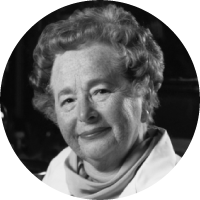
Gertrude Elion
Pharmacologist-Biochemist
(1918-1999)
USA
She saved thousands of lives by developing drugs to fight cancer, AIDS, herpes, and many more diseases. She was the first woman to be inducted into the National Inventors Hall of Fame and won the Nobel Prize in Physiology or Medicine in 1988.
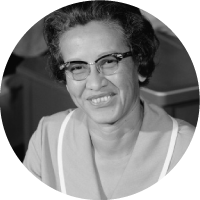
Katherine Johnson
Physicist-Mathematician
(1918-)
USA
She worked on NASA's Mercury missions, space shuttles, and plans for the Mission to Mars, and she calculated the flight path for the first manned mission to the Moon. She helped write the first textbook about space travel. In 2015, she was awarded the Presidential Medal of Freedom at the age of 97.
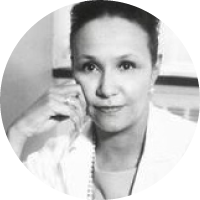
Jane Cooke Wright
Oncologist
(1919-2013)
USA
Nicknamed "the mother of chemotherapy," she developed new chemo techniques, and ways to test chemo drugs and to treat hard to reach tumors, saving millions of lives. She was the first woman president of the New York Cancer Society and cofounded the American Society of Clinical Oncology.
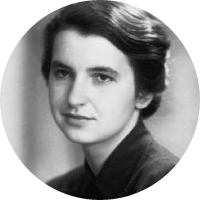
Rosalind Franklin
Chemist-X-Ray Crystallographer
(1920-1958)
England
She discovered the DNA double helix and did critical work on molecular structure of DNA, RNA, viruses, coal, and graphite. She pioneered research on the tobacco mosaic virus and polio and researched charcoal to be used in gas masks during WWII.
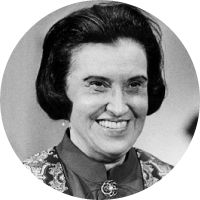
Rosalyn Yalow
Medical Physicist
(1921-2011)
USA
She developed the RIA technique to measure hormones in the body and gave us a better understanding of diabetes and other hormone-related diseases. Her work won the Nobel Prize in Physiology or Medicine in 1977.
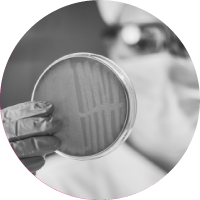
Esther Lederberg
Microbiologist
(1922-2006)
USA
She pioneered bacteria genetics and helped us better understand bacteria and viruses. She developed a new method to study mutations called replica plating that helps us also understand bacterial antibiotics resistance.
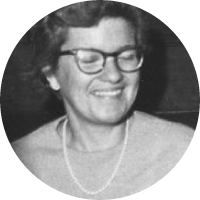
Vera Rubin
Astronomer
(1928-2016)
USA
She discovered real proof that dark matter exist, discovered a new galaxy, and made brand-new observations on how galaxies rotate. She was the first woman to be allowed to use the Palomar Observatory. She was elected to the National Academy of Sciences and won the James Craig Watson Medal.
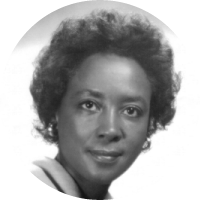
Annie Easley
Computer Programmer-Mathematician-Rocket Scientist
(1933-2011)
USA
She did important research on alternative energy and co-wrote many papers about nuclear rocket engines and power plants. She helped create software for the Centaur Rocket and worked in the Launch Vehicles Division of NASA. Her work with electric batteries laid the foundation for today's hybrid vehicles.
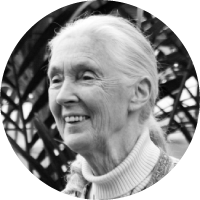
Jane Goodall
Primatologist-Ethologist- Anthropologist
(1934- )
USA
She is considered the world's foremost experts on chimpanzees and she is one of the most recognized animal rights and wildlife conservation activists. She is a U.S. Messenger of Peace and, through her work, she has forever changed the way we understand animals and ourselves.
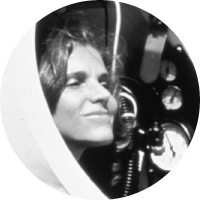
Sylvia Earle
Marine Biologist-Explorer-Aquanaut
(1935-)
USA
Her research, exploration, and photography help educate people about the world's oceans. She is National Geographic's Explorer-in-Residence and through her "Mission Blue" she fights to protect the ocean from pollution and overfishing. She holds the women's record for the deepest dive since 1979.
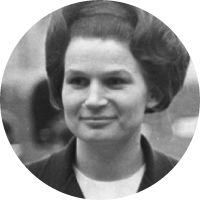
Valentina Tereshkova
Engineer-Cosmonaut
(1937-)
Russia (USSR)
She was the first woman in space, having logged more time in space than anyone on previous missions. She has orbited 48 times, setting a world record. She continues to train cosmonauts and contributes to Russian politics and works for world peace.
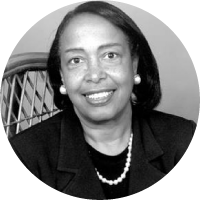
Patricia Bath
Ophthalmologist-Inventor
(1942-)
USA
She is the first African- American woman to complete a residency in ophthalmology and the first African American woman to get a medical patent in 1998. She is the inventor of Laserphaco Probe, a major breakthrough used to treat cataracts and restore sight around the world. She cofounded the American Institute for the Prevention of Blindness.
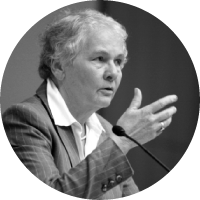
Christiane Nüsslein-Volhard
Biologist
(1942-)
Germany
Her use of fruit flies to understand how genes instruct stem cells to grow gave her the nickname "lady of the flies". Her work contributed to our understanding of evolution and human development. She won a Nobel Prize in Physiology or Medicine. Her namesake foundation helps women scientists pay for daycare.
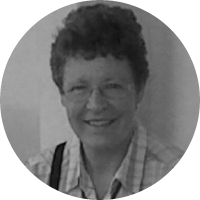
Jocelyn Bell Burnell
Astrophysicist
(1943- )
Ireland
She discovered a new type of star, the Pulsar. Her research gave us further understanding of the life cycle of stars and planets. She continues to study stars and black holes and she is an advocate for more women in science.
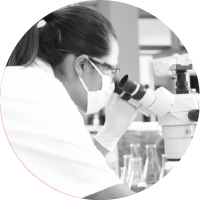
Sau Lan Wu
Particle Physicist
(1940s-)
Japan
She was a key scientist in the discoveries of the Higgs boson, aka "God Particle," the charm quark, and the gluon. She has met her own personal goal to make at least three major discoveries. She has won the European Physical Society Prize for High Energy Physics and is a Fellow of the American Academy of Arts and Sciences.
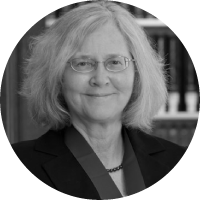
Elizabeth Blackburn
Molecular Biologist
(1948-)
Australia
She furthered our understanding of human life and chromosomes, by discovering the telomerase, the enzyme that rebuilds telomeres, the DNA material that keeps chromosomes healthy. She won the 2009 Nobel Prize in Physiology and Medicine.
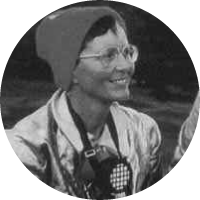
Katia Krafft
Geologist-Volcanologist
(1942-1991)
France
She pioneered volcano nature photography and started her own foundation for volcanology along with her husband, Maurice Krafft. She used observation to help governments develop volcano safety and evacuation procedures.
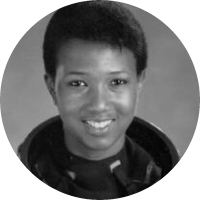
Mae Jemison
Astronaut-Educator-Doctor
(1956-)
USA
She was the first African American woman in space. She is the principal of the 100 Year Starship project that aims to make sure that human beings will be able to travel to the next solar system within the next 100 years, and founder of the Jemison Group Inc. and BioSentient Corporation, which creates devices that will allow doctors to monitor patients' day-to-day nervous system functions.
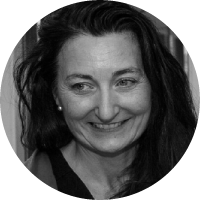
May-Britt Moser
Psychologist- Neuroscientist
(1963- )
Norway
She discovered grid cells and how maps are made in the human mind. Grid cells are crucial to our memory and understanding them can help us treat memory-related illnesses like Alzheimer's. Along with her husband, Edward, she won the Nobel Prize in Physiology or Medicine in 2014. She is a cofounder of the Kavli Institute.
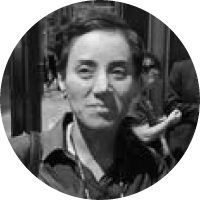
Maryam Mirzakhani
Mathematician
(1977-2017)
Iran
She has done important work in the field of hyperbolic geometry and given us new insight into the dynamics of abstract surfaces. She was the first woman to win the Fields Medal, considered the Nobel Prize in Math.
Source: Women in Science: 50 Fearless Pioneers Who Changed the World by Rachel Ignotofsky, Ten Speed Press, 2016
Photo Credits: Elizabeth Blackburn - Science History Institute; Valentina Tereshkova - RIA Novosti Archive, Image #612443/Alexander Mokletsov/CC-BY-SA 3.0; Mary Agnes Chase - Smithsonian Institute